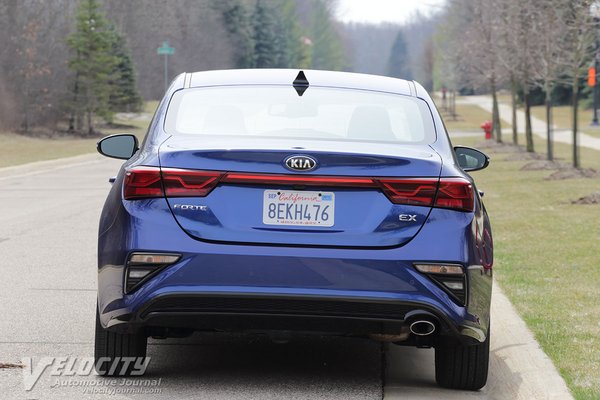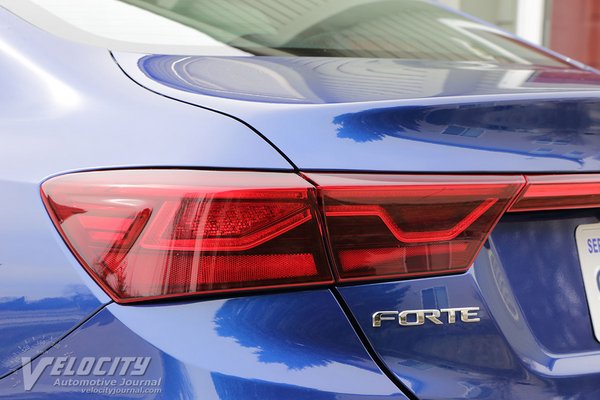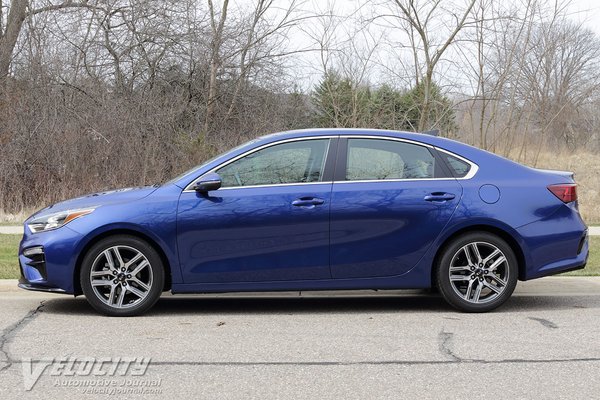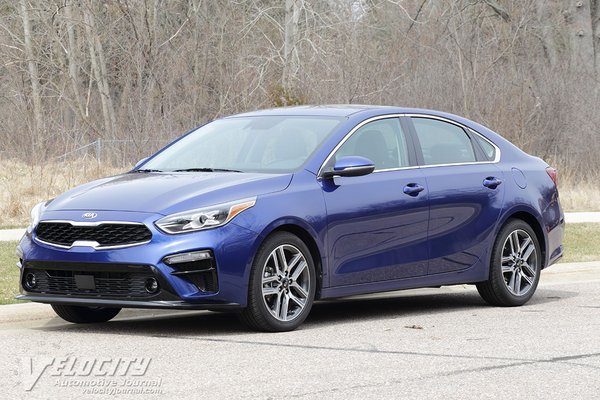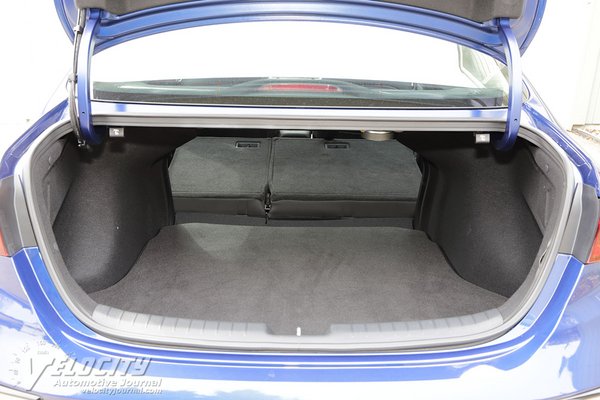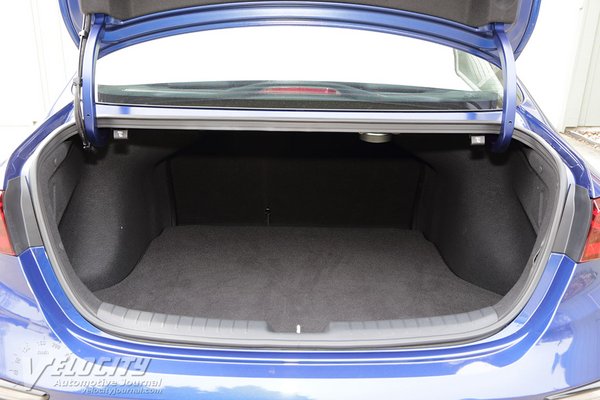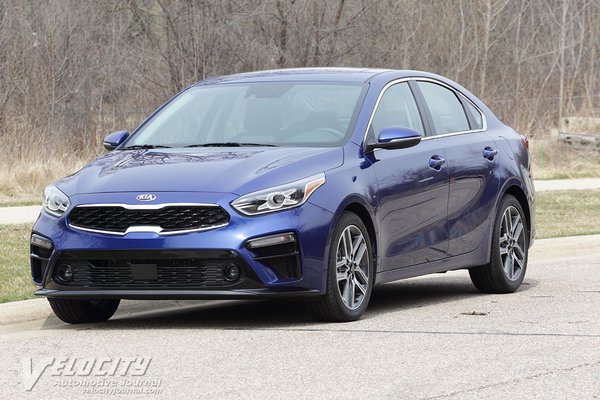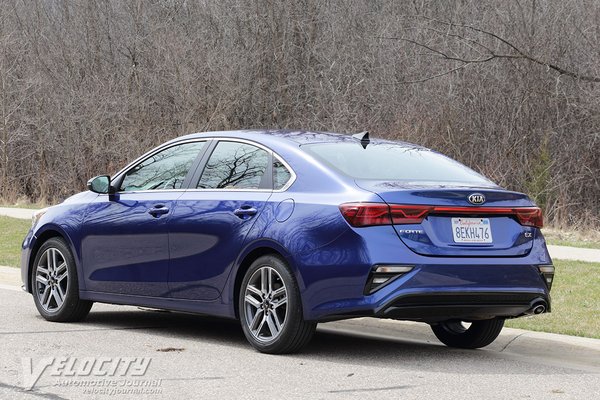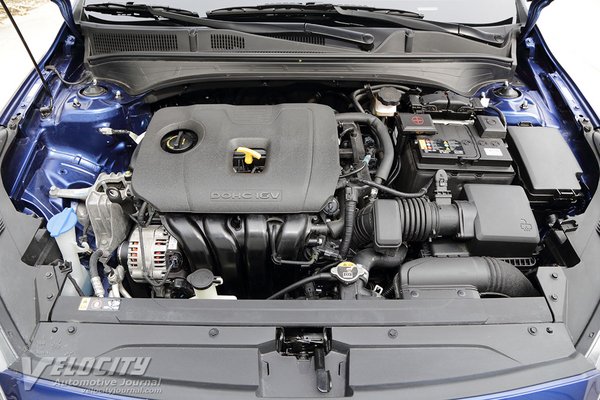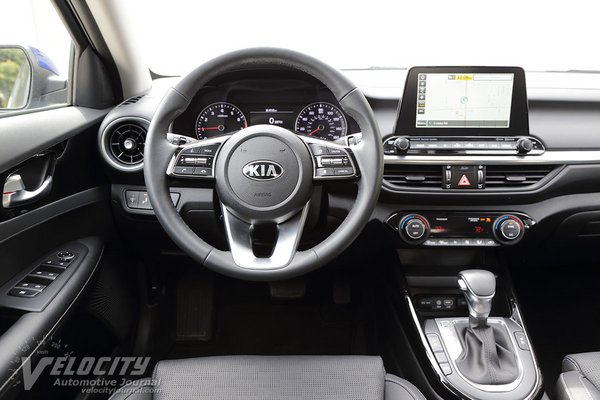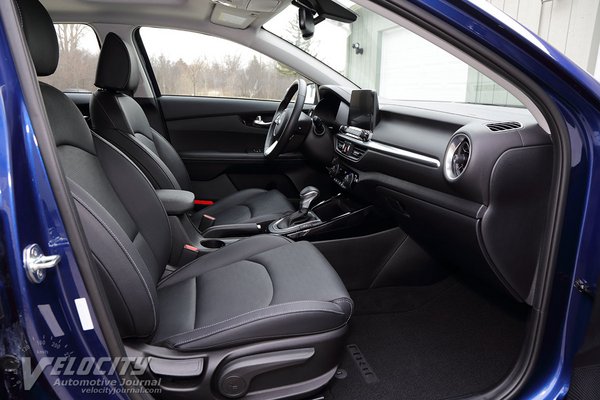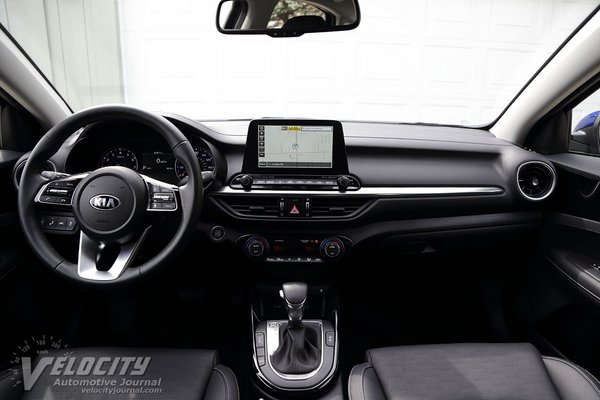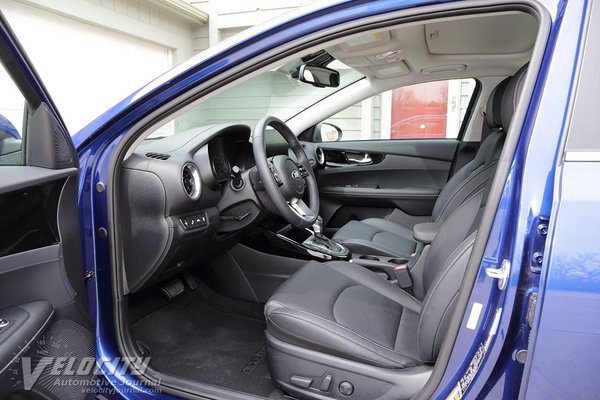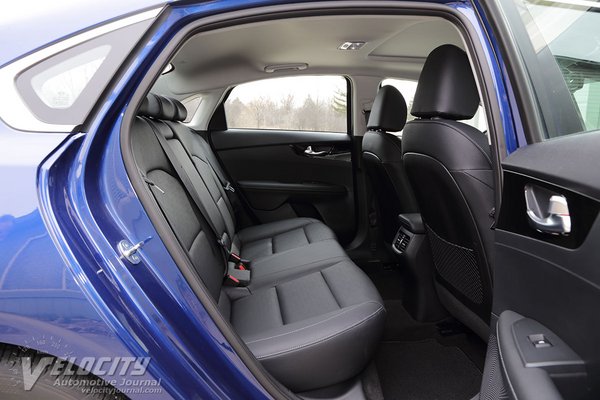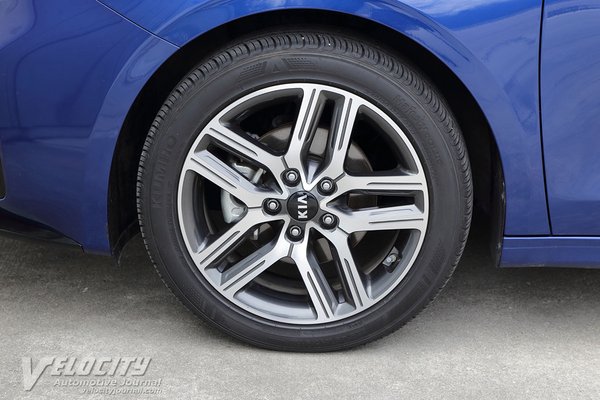2019 Kia Forte EX
09/02/2019
Shahed Hussain
Kia's Forte sedan is one of the most affordable models in its lineup. Positioned just above the subcompact Rio, the Forte is only available as 4-door sedan. The 2019 Forte range consists of four models: FE, LXS, S and EX. For 2020, Kia added the Forte GT as the top model and eliminated the Forte S. Pricing for the 2020 Forte starts at $17,790 for the base FE and runs up to $23,215 (GT DCT). Competition includes the closely related Hyundai Elantra, Toyota Corolla, Honda Civic, and Ford Focus.
Our test vehicle was a Forte EX (2020 MSRP is $21,990). Significant equipment includes 17-in. dia. alloy wheels, heated and ventilated front seats, power driver's seat, leather-wrapped steering wheel, 8 in. touchscreen with navigation, and an 8-speaker Harman Kardon audio system. Android Auto and Apple CarPlay smartphone integration are also standard. Standard safety technologies include Forward Collision Avoidance, Lane Departure Warning, Lane Keeping Assist, Blind-Spot Collision Warning, and Rear Cross-Traffic Collision Warning.
An all-aluminum 2.0L inline-4 powers most Forte models. With dual overhead cams and variable valve-timing, the 2.0L cranks out 147-hp @ 6,200 RPM and 132 lb.-ft. @ 4,500 RPM. A 6-speed manual is standard for the base Forte FE, but other models send power to the front wheels via a CVT (continuously variable transmission) coupled to a torque converter. The new 201-hp Forte GT offers a choice of a 6-speed manual or 7-speed dual-clutch transmission (DCT) mated to a turbo 1.6L four. The 2.0L/CVT powertrain fuel consumption is rated at 40/30 MPG (city/hwy.).
The Forte's suspension is the typical MacPherson struts in front with a torsion beam axle, coil springs and dampers at the rear. Brakes are discs at all four wheels with 11.0 in. dia. front rotors and 10.3 in. dia. rear rotors. Steering is via a rack-and-pinion setup with 2.44 turns lock-to-lock and electric motor assist. P225/45R17 Kumho Majesty Solus tires on 17-in. dia. alloy wheels are standard on the Forte EX. Curb weight ranges from 2,762-2,903 lbs. for CVT models.
Kia's interior design team specified premium materials for its class. Most surfaces are soft touch with polished aluminum trim on the dash, steering wheel and shifter. The instrument panel consists of an analog speedometer and tachometer; smaller coolant and fuel level indicators are integrated within the larger gauges. A multi-function digital display is centered in the gauge cluster. The leather-wrapped steering wheel includes cruise, phone, and audio controls on the spokes. An 8-in. tablet-style touchscreen infotainment display is mounted on top of the center stack. Frequently used controls for audio and navigation get dedicated knobs and buttons. Dual knobs and buttons provide direct control of the climate control system. Portable electronics can be charged via the USB port or the Qi wireless charging pad. Dual 12V power outlets and an analog line-in port are also included in the center console. Front seat heating and ventilation controls are next to the shift lever, along with the drive mode button that cycles through different transmission shift calibrations (Sport, Normal, Smart).
The 10-way power driver's seat has decent torso support and adjustable lumbar, but the flat cushions don't provide much lateral support. The Forte EX seats are covered in a rubbery "Sofino" plastic that feels like neither vinyl or leather; other Forte models get cloth seat trim instead. Front headroom is adequate for adults up to 6 ft. tall. Rear seat accommodations are acceptable for two occupants, but the folding center armrest makes the center position only suitable for short trips. Vents behind the center console direct air to the rear passengers. The rear seats fold down for increased cargo capacity.
The Forte is aimed at the value-conscious customer, so Kia's chassis engineers tuned the suspension for a supple ride to absorb bumps and potholes. The rear torsion beam axle design prevents undue hopping or rear axle steering effects. On typical suburban roads, the chassis exhibits moderate body roll and understeer as expected, so we did not try to approach the Forte's handling limits. Wind and tire noise are unobtrusive at highway cruising speeds, so the Forte is a reasonable choice for road trips. The electrically-assisted steering transmits adequate road surface input and is not overly assisted. All-disc brakes provide effective stopping power in normal use, but we did note significant suspension dive under hard braking.
Kia's powertrain engineers managed to hide the typical CVT droning and surging that annoys customers. The CVT is programmed to vary engine RPM, mimicking a conventional stepped-ratio transmission so that powertrain vibrations don't continuously shake the passenger compartment structure during acceleration. The CVT harnesses the available 147-hp from the 2.0L effectively, but enthusiasts should consider the new Forte GT if performance is a priority.
The Forte, especially the less expensive trim levels, is certainly worth considering as an alternative to the American and Japanese compact sedan entries. Fortunately for Kia, declining sales in the US are causing GM and Ford to leave this segment. However, Kia's challenge is to convince buyers to opt for the Forte over its more established Japanese competition from Toyota, Honda, and Nissan.

